What is sustainable fashion?
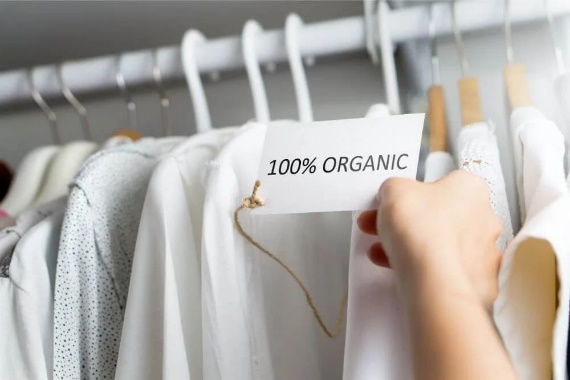 People can often end up lumping sustainable fashion and ethical fashion together as they often have a lot of intersectionality between them. The thing about sustainable and ethical fashion is that it can be quite hard to sum up due to the massive area that it can cover. However, in her article on why sustainable and ethical fashion is important, Julie Moorhouse claims that ‘it pretty much boils down to three areas: people, [the] planet and animals, [as well as] the protection of them’.[1] The definition of sustainable fashion, which can also be classified as environmentally or eco-friendly fashion, is the way that fashion can have less of an impact on the environment or the planet. Ethical fashion, however, often refers to how fashion can be kinder to animals. Sustainable fashion can also be used as an umbrella term for it all, so most of the time the two things can be classed as interchangeable.[2]
People can often end up lumping sustainable fashion and ethical fashion together as they often have a lot of intersectionality between them. The thing about sustainable and ethical fashion is that it can be quite hard to sum up due to the massive area that it can cover. However, in her article on why sustainable and ethical fashion is important, Julie Moorhouse claims that ‘it pretty much boils down to three areas: people, [the] planet and animals, [as well as] the protection of them’.[1] The definition of sustainable fashion, which can also be classified as environmentally or eco-friendly fashion, is the way that fashion can have less of an impact on the environment or the planet. Ethical fashion, however, often refers to how fashion can be kinder to animals. Sustainable fashion can also be used as an umbrella term for it all, so most of the time the two things can be classed as interchangeable.[2]
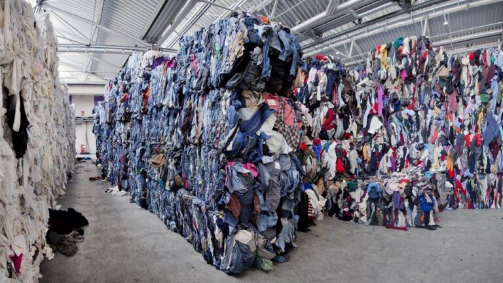 How is the fashion industry not sustainable?
How is the fashion industry not sustainable?
The fashion industry as we know it is worth ‘$1.5 trillion globally and employs more than 300 million people’, and is also responsible for as much as 10% of all global pollution, making it the second most polluting industry in the world.[3] Globally ‘we consume 62 million tons of textiles per year; by 2030, this is expected to reach 102 million tons’.[4] Fast fashion has caused an increase in the number of styles and collections of clothing that can be produced in a much quicker timeframe, as well as it being for a lower price. Fast fashion has also caused an increase in the material used throughout the production process; fashion brands are now producing twice the amount of clothing today compared to before 2000.[5] This, however, has led to a significant increase in fashion waste, much of the production process is inefficient and causes clothing ends to end up on the cutting room floor rather than being recycled, some studies estimate that textile waste during manufacturing is as high as 25%.[6] As well as the fact that many companies still burn millions of dollars of unsold clothes at the end of each season.[7]
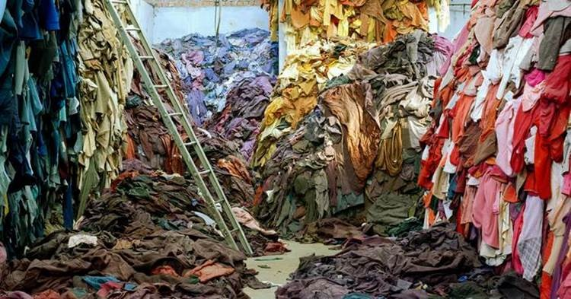 Because people are buying clothes more often, they are wearing the clothing that they do buy less; the average piece of clothing is worn 36% fewer times than it was 15 years ago.[8] Another reason that people continue to play into this unsustainable cycle of fast fashion is since clothes that are produced by fast fashion companies are produced to have a short-lived garment usage, meaning that they are produced not to last, this causes consumers to continue buying fast fashion as the clothes that they do buy do not last a significant amount of time, meaning that they have to buy more, adding to the cycle of consumption. In some countries, 40% of purchased clothing is never used. [9]
Because people are buying clothes more often, they are wearing the clothing that they do buy less; the average piece of clothing is worn 36% fewer times than it was 15 years ago.[8] Another reason that people continue to play into this unsustainable cycle of fast fashion is since clothes that are produced by fast fashion companies are produced to have a short-lived garment usage, meaning that they are produced not to last, this causes consumers to continue buying fast fashion as the clothes that they do buy do not last a significant amount of time, meaning that they have to buy more, adding to the cycle of consumption. In some countries, 40% of purchased clothing is never used. [9]
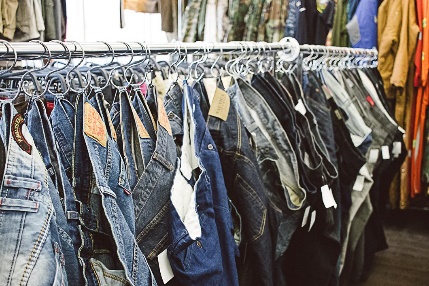
 Products and methods used to create fashion cause irreversible damage to the environment. One example is synthetic dyes, while they are amazing at producing long-lasting vibrant clothing, they are incredibly harmful to our natural environment.[10] Synthetic dyes create ‘air pollution, water pollution, and soil pollution’, and fashion is responsible for up to one-fifth of industrial water pollution.[11] Factories that use synthetic dyes must use large amounts of water, which is extremely damaging to the natural world, as the chemicals often make their way into the ecosystem surrounding the factories, causing irreversible damage to the surrounding area, such as filtering into the water supply and being filtered into the soil in the surrounding areas. The fashion industry uses around twenty-one trillion gallons of water annually, which is enough to fill 37 Olympic swimming pools, according to the Ellen MacArthur Foundation.[12] [13] Moreover, around 20 % of wastewater worldwide comes from fabric dyeing and treatment.[14] [15]
Products and methods used to create fashion cause irreversible damage to the environment. One example is synthetic dyes, while they are amazing at producing long-lasting vibrant clothing, they are incredibly harmful to our natural environment.[10] Synthetic dyes create ‘air pollution, water pollution, and soil pollution’, and fashion is responsible for up to one-fifth of industrial water pollution.[11] Factories that use synthetic dyes must use large amounts of water, which is extremely damaging to the natural world, as the chemicals often make their way into the ecosystem surrounding the factories, causing irreversible damage to the surrounding area, such as filtering into the water supply and being filtered into the soil in the surrounding areas. The fashion industry uses around twenty-one trillion gallons of water annually, which is enough to fill 37 Olympic swimming pools, according to the Ellen MacArthur Foundation.[12] [13] Moreover, around 20 % of wastewater worldwide comes from fabric dyeing and treatment.[14] [15]
Another example of this is the production of jeans; the process of making just one pair is extremely wasteful and harmful to our planet. The production of one pair of jeans takes 3,781 liters of water, if this is the amount of water needed for just one pair of jeans, imagine the environmental cost for everything in our wardrobes.[16] Alongside, the fact that jeans are mostly produced from cotton which is not only an extremely thirsty crop, it is 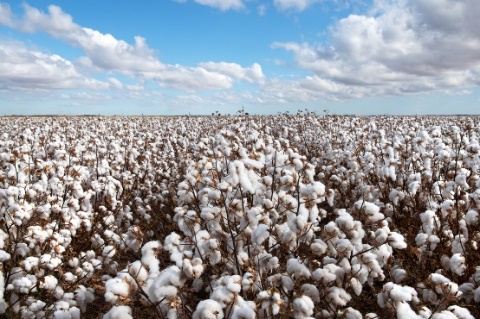 also a favourite of pests, meaning that a viable cotton crop will often require pesticides and chemicals in the production process.[17] This means that this widely used material often fails to maintain a sustainable production process. As well as the fact that on a larger scale, every year the fashion industry uses 93 billion cubic meters of water, which is enough to meet the consumption needs of five million people.[18]
also a favourite of pests, meaning that a viable cotton crop will often require pesticides and chemicals in the production process.[17] This means that this widely used material often fails to maintain a sustainable production process. As well as the fact that on a larger scale, every year the fashion industry uses 93 billion cubic meters of water, which is enough to meet the consumption needs of five million people.[18]
How is the fashion industry trying to become sustainable?
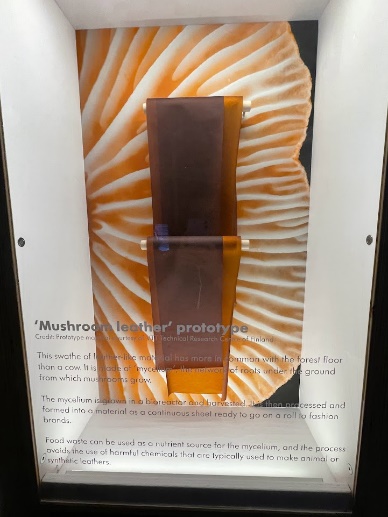 Foundations such as the Ellen MacArthur and initiatives such as the UN Alliance for Sustainable Fashion, as well as other organizations are calling for an upheaval of the way that textiles are produced. The goal of many of these groups is to explore new materials to use in fashion as well as looking into making clothing more durable so it can be resold or recycled into other products, which will help to reduce the waste the industry produces.[19]
Foundations such as the Ellen MacArthur and initiatives such as the UN Alliance for Sustainable Fashion, as well as other organizations are calling for an upheaval of the way that textiles are produced. The goal of many of these groups is to explore new materials to use in fashion as well as looking into making clothing more durable so it can be resold or recycled into other products, which will help to reduce the waste the industry produces.[19]
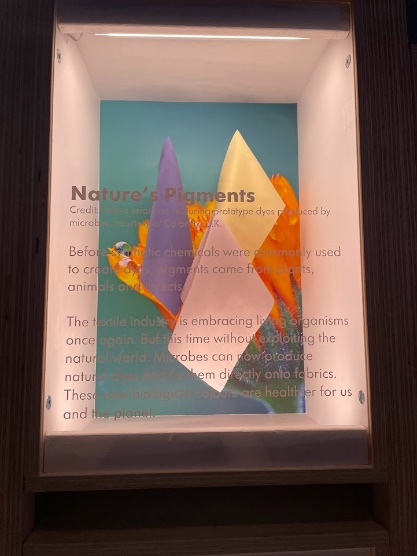 Some changes have been made such as fish skins and natural dyes replacing chemicals.[20] Natural dyes use natural products, such as flowers, coffee, or fruit, which do much less harm to our natural environment. They are also a great long-term sustainable way to dye our fabrics. Scientists are exploring using microbes in the process of natural dyeing to increase the longevity of the dye. Other alternatives such as mushroom leather and seaweed yarn are being explored as well.[21] Furthermore, changes in some leading brands have been made, such as the fact that we can see some athletic attire and shoes are being made from materials extracted from plastic dumped in the ocean, and backpacks and purses are being made of discarded canvas, as well as some companies having a return policy so that they can recycle the consumer’s garments after they have worn out.[22]
Some changes have been made such as fish skins and natural dyes replacing chemicals.[20] Natural dyes use natural products, such as flowers, coffee, or fruit, which do much less harm to our natural environment. They are also a great long-term sustainable way to dye our fabrics. Scientists are exploring using microbes in the process of natural dyeing to increase the longevity of the dye. Other alternatives such as mushroom leather and seaweed yarn are being explored as well.[21] Furthermore, changes in some leading brands have been made, such as the fact that we can see some athletic attire and shoes are being made from materials extracted from plastic dumped in the ocean, and backpacks and purses are being made of discarded canvas, as well as some companies having a return policy so that they can recycle the consumer’s garments after they have worn out.[22]
Yet, there are some issues with the fact that many leading brands have answered this call as it leads to the increased risk of greenwashing. Greenwashing refers to claims of environmental sustainability by a brand that are false or misleading. The International Consumer Protection and Enforcement Network (ICPEN), a global network of consumer protection authorities, has recently swept websites for greenwashing. They found that as many as 40% of environmental claims could be misleading customers. [23]
The advantages of sustainable fashion
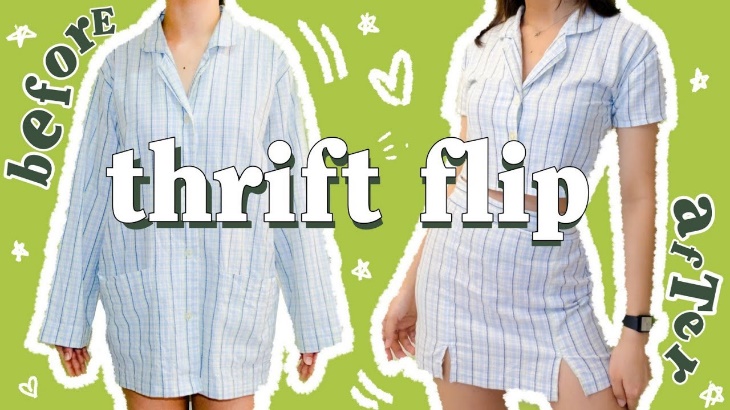 An advantage of sustainable fashion is that it is saving natural resources and lowering the carbon footprint of the fashion industry. Sustainable fashion materials such as organic cotton which has a carbon emission contribution 46% lower than conventional cotton. As well as the fact that many sustainable companies source their materials from managed forests, which means that these brands are not contributing to unsustainable deforestation. The sustainable sector also implements recycling programs, which help to reduce the mountains of waste that the fashion sector produces every year.[24] An example of this is the growing trend of upcycling and ‘thrift flipping,’[25] where someone will remake an old garment into something in their style. This is an example of careful consumption, where you are conscious of the facts of fashion, and factor this into your buying habits. This ties in with sustainable brands’ other aims such as promoting a circular system to help lower the waste levels that fashion produces. They do this by using eco-friendly fabrics to reduce their environmental impact.[26]
An advantage of sustainable fashion is that it is saving natural resources and lowering the carbon footprint of the fashion industry. Sustainable fashion materials such as organic cotton which has a carbon emission contribution 46% lower than conventional cotton. As well as the fact that many sustainable companies source their materials from managed forests, which means that these brands are not contributing to unsustainable deforestation. The sustainable sector also implements recycling programs, which help to reduce the mountains of waste that the fashion sector produces every year.[24] An example of this is the growing trend of upcycling and ‘thrift flipping,’[25] where someone will remake an old garment into something in their style. This is an example of careful consumption, where you are conscious of the facts of fashion, and factor this into your buying habits. This ties in with sustainable brands’ other aims such as promoting a circular system to help lower the waste levels that fashion produces. They do this by using eco-friendly fabrics to reduce their environmental impact.[26]
Moreover, there has been a growing trend of buying second-hand. With this growth in popularity, the ability to access preloved or for-hire clothing has grown. This is a great way to reduce waste and even reduce microplastic shedding in your laundry cycle. Shopping for second-hand clothing or hiring clothing that you may only wear once or cannot afford is a sustainable way to access the style you want more cheaply. Some brands have seen the growing trend of sustainably and have started to sell their products second-hand. [27]
A further way that sustainable fashion aims to help the environment is by helping to reduce the number of animal products that are used in their production. Sustainable fashion outlets often work to protect not only the people living on the planet but also the environment and all the animals that reside on it. Materials such as vegan leathers are becoming a popular alternative, with things such as apples or even pineapple leaves being turned into animal-friendly leather. Not only is the sustainable industry working on alternatives to leather, additionally the sustainable fashion sector also looks for alternatives to fur. Products such as wool are also sourced ethically.[28] If you want to avoid problems like  greenwashing in this instance, you can look for the PeTA-approved vegan label.[29]
greenwashing in this instance, you can look for the PeTA-approved vegan label.[29]
In addition to that, sustainable fashion often supports fashion innovation. There are some fabulous ideas out there that are doing wonderful things for sustainable fashion. From creating leather from by-products of the pineapple juice industry to aiming to help ocean pollution by turning sea plastic into swimwear.[30] The more that we support innovative methods in the fashion industry the more likely it becomes for people to foster sustainable solutions to the problems that we face in the fashion sector. The fashion industry needs to keep up with the current world crisis and find ways to use innovation to help solve the ongoing climate crisis. Buying from sustainable brands helps to do this as it draws attention to the brands allowing them to use more innovative methods.
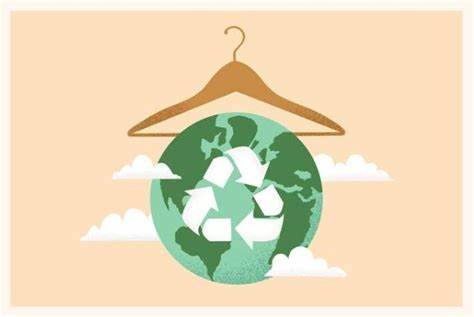 While it is true that sustainable fashion has a reputation for being pricey, albeit with some exceptions, sustainable fashion is often quite pricey. Yet, what people often tend to overlook when thinking about the price tag is that sustainable fashion is of a higher quality. While in the short term, it may seem that you are losing more money while collecting sustainable pieces, you will save money in the long term as the clothes will last longer.[31] As I was mentioning earlier, fast-fashion pieces are often made to have a short shelf life, so it enforces the perpetual cycle of overconsumption; replacing a £20 dress every six months soon will start costing more than paying £100 for a dress that lasts ten years. Sustainable clothes are built to last. Extending the life of a garment by just nine months can reduce its carbon footprint by 20-30%! [32]
While it is true that sustainable fashion has a reputation for being pricey, albeit with some exceptions, sustainable fashion is often quite pricey. Yet, what people often tend to overlook when thinking about the price tag is that sustainable fashion is of a higher quality. While in the short term, it may seem that you are losing more money while collecting sustainable pieces, you will save money in the long term as the clothes will last longer.[31] As I was mentioning earlier, fast-fashion pieces are often made to have a short shelf life, so it enforces the perpetual cycle of overconsumption; replacing a £20 dress every six months soon will start costing more than paying £100 for a dress that lasts ten years. Sustainable clothes are built to last. Extending the life of a garment by just nine months can reduce its carbon footprint by 20-30%! [32]
As I have mentioned previously some of the chemicals used in the fashion sector are extremely damaging. More than 8,000 chemicals are used in manufacturing, and some of these chemicals have been linked to everything from minor skin aggravation to serious illnesses like skin cancer.[33] [34] One common substance that comprises up to 60-70% of all dyes used in the textiles industry, as well as the food and art industry, is Azo dyes, which can cause skin irritations, but also have certain dyes which have been banned due to them containing carcinogens (which can contribute to cancer growth).[35] [36] [37] Fortunately, one type of chemical that these types of dyes are derived from is benzidine, commonly associated with bladder cancer, had production of it discontinued in the 1980s in many Western countries.[38] While these chemicals are mainly used in the production phase, traces of them can carry over into the clothing that you wear. So, not  only are these chemicals bad for the environment, but it has also been proven that many chemicals in the fashion process can be damaging to the human population. So, as sustainable brands tend to promote the use of organic materials and the use of natural, less harmful dyes, making sustainable decisions in your fashion can be not only better for the world but can be a healthy choice for you personally as well.[39]
only are these chemicals bad for the environment, but it has also been proven that many chemicals in the fashion process can be damaging to the human population. So, as sustainable brands tend to promote the use of organic materials and the use of natural, less harmful dyes, making sustainable decisions in your fashion can be not only better for the world but can be a healthy choice for you personally as well.[39]
The disadvantages of sustainable fashion
Unfortunately, although sustainable fashion is an awesome sector of fashion with many people starting to access it as well as looking for ways to be more sustainable, with a few sustainable brands making a difference, the reality is that a few brands aren’t going to reverse the ongoing effects of climate change. For the sustainable fashion sector to influence the widespread nature of the issues within fashion there needs to be an industry-wide change. The fast-fashion sector has been a booming business for decades and is the way that most consumers today access fashion.[40] However, a 2019 report found that the effort that fast fashion brands were making to improve sustainable production measures were decreasing.[41] A few retailers even noted that they do not consider environmental responsibility a priority for them.[42] The reality is that for the sustainable industry to be truly effective, all fashion sectors need to get on board. Volume-based companies can’t, and often won’t, easily transition into a sustainable process.[43] Their dependency upon growth is often a huge factor that holds them back, due to their values of making a higher profit in the short term instead of thinking about the long-term impacts that their production and encouragement of overconsumption will have on the world around them.
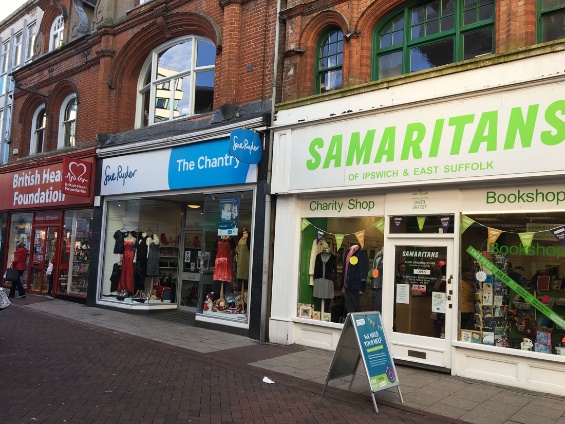 While I have mentioned the fact that the quality of sustainable fashion often outweighs the price tag due to its long shelf life, it does often exclude people from accessing it. While higher-quality clothing may cost us less in the long run, a lot of people often don’t have the extra cash available to buy quality items in the first place.[44] So, until the sustainable sector becomes more affordable, they will be excluding a huge demographic of people that simply can’t access this type of fashion, maybe even despite a growing desire to do so.[45] And while there are cheaper alternatives such as buying clothes second-hand there can be factors when buying second-hand clothing that may not be appealing to some people. As an example, due to the fast-fashion business encouraging the overconsumption of clothing people have started to donate their fast-fashion items to second-hand outlets, which then due to the short shelf life of fast-fashion clothing means that even once it’s donated, the chances of the new buyer getting a lot of wear out of the item is unrealistic, meaning that we aren’t actually stopping the cycle of overconsumption; and while it is better than buying fast-fashion brand new, it does still mean that we are filling our wardrobes with fast-fashion. Moreover, along with the growth of thrift-flipping, there has been a growth in people who will raid charity shops and such for their cheapest, but nicest looking clothes, and then reselling them for triple the profit. This is also having a knock-on effect by making second-hand shopping not an opportunity for the disadvantaged who wish to be more sustainable. It is also excluding plus-sized people who wish to buy second-hand but are unable to do so due to the fact that the ongoing trend of thrift flipping causes people to buy such clothing to cut it up, or even just people who may not fit the plus-sized demographic purchasing such clothes to hop on the trend of an ‘oversized fit’.[46] Such reasons exclude many people from sustainable fashion.
While I have mentioned the fact that the quality of sustainable fashion often outweighs the price tag due to its long shelf life, it does often exclude people from accessing it. While higher-quality clothing may cost us less in the long run, a lot of people often don’t have the extra cash available to buy quality items in the first place.[44] So, until the sustainable sector becomes more affordable, they will be excluding a huge demographic of people that simply can’t access this type of fashion, maybe even despite a growing desire to do so.[45] And while there are cheaper alternatives such as buying clothes second-hand there can be factors when buying second-hand clothing that may not be appealing to some people. As an example, due to the fast-fashion business encouraging the overconsumption of clothing people have started to donate their fast-fashion items to second-hand outlets, which then due to the short shelf life of fast-fashion clothing means that even once it’s donated, the chances of the new buyer getting a lot of wear out of the item is unrealistic, meaning that we aren’t actually stopping the cycle of overconsumption; and while it is better than buying fast-fashion brand new, it does still mean that we are filling our wardrobes with fast-fashion. Moreover, along with the growth of thrift-flipping, there has been a growth in people who will raid charity shops and such for their cheapest, but nicest looking clothes, and then reselling them for triple the profit. This is also having a knock-on effect by making second-hand shopping not an opportunity for the disadvantaged who wish to be more sustainable. It is also excluding plus-sized people who wish to buy second-hand but are unable to do so due to the fact that the ongoing trend of thrift flipping causes people to buy such clothing to cut it up, or even just people who may not fit the plus-sized demographic purchasing such clothes to hop on the trend of an ‘oversized fit’.[46] Such reasons exclude many people from sustainable fashion.
Another disadvantage of aiming to shop sustainably is that due to their being less sustainable brands, there is less of a choice. While it is a growing market, the sustainable sector is not a giant one. This means that there simply are not brands that cater to everyone’s personal style. The fact that it is a niche part of the sector without limitless options can leave people without the options to suit their taste or even their size, as many sustainable brands have a limited stock selection. This can then force people back to shopping in the mainstream fashion market. Another problem with this is that many sustainable brands often only operate exclusively in the online market, and do not have physical stores, which further limits consumer choices and the demographic that can access them.[47]
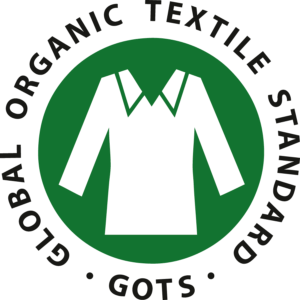 As I have previously mentioned, there is also the danger of greenwashing. There are often pretty pictures of nature and models posing in natural environments that are aimed at enticing people into stores. A lot of people have probably been unknowingly burned by greenwashing in their fashion choices. Brands that present themselves as sustainable, without the processes and policies to back them up are preying on trusting conscious consumers and fueling mistrust and misinformation in the sector. And while things such as certifications like GOTS (global organic textile standard) certified cotton, and fairtrade, can be a good way to try to avoid greenwashing most people wouldn’t know what certifications to look out for, as well as the fact that many certifications have confusing names and a lack of research or information on the subject makes it hard to decipher if there is actually a promise of sustainability or whether trusting this brand will leave us the victim of greenwashing scams.[48] Yet, a good thing that has been put in place recently is the ‘Green Claims Code’, where the Competition and Markets Authority (CMA), has warned businesses that they have until the start of 2022 to make sure that their environmental claims comply with the law. It included six principles that are based on existing consumer law, yet the important parts are the fact that it is clear in the fact that businesses “must not omit or hide important information” and “must consider the full life cycle of the product”.[49] At the start of 2022, the CMA promised that they will be carrying out a full review of misleading green claims.[50] [51] This should help with the uncertainty when practicing conscious consumerism. However, this is only enforced within the borders of the UK as the CMA is a non-ministerial government department in the UK, so, there is still the issue of greenwashing when shopping internationally, which people tend to do, especially with sustainable clothing due to the small selection of brands to choose from.
As I have previously mentioned, there is also the danger of greenwashing. There are often pretty pictures of nature and models posing in natural environments that are aimed at enticing people into stores. A lot of people have probably been unknowingly burned by greenwashing in their fashion choices. Brands that present themselves as sustainable, without the processes and policies to back them up are preying on trusting conscious consumers and fueling mistrust and misinformation in the sector. And while things such as certifications like GOTS (global organic textile standard) certified cotton, and fairtrade, can be a good way to try to avoid greenwashing most people wouldn’t know what certifications to look out for, as well as the fact that many certifications have confusing names and a lack of research or information on the subject makes it hard to decipher if there is actually a promise of sustainability or whether trusting this brand will leave us the victim of greenwashing scams.[48] Yet, a good thing that has been put in place recently is the ‘Green Claims Code’, where the Competition and Markets Authority (CMA), has warned businesses that they have until the start of 2022 to make sure that their environmental claims comply with the law. It included six principles that are based on existing consumer law, yet the important parts are the fact that it is clear in the fact that businesses “must not omit or hide important information” and “must consider the full life cycle of the product”.[49] At the start of 2022, the CMA promised that they will be carrying out a full review of misleading green claims.[50] [51] This should help with the uncertainty when practicing conscious consumerism. However, this is only enforced within the borders of the UK as the CMA is a non-ministerial government department in the UK, so, there is still the issue of greenwashing when shopping internationally, which people tend to do, especially with sustainable clothing due to the small selection of brands to choose from.
Another reality is that sustainability in fashion needs to be supported at all levels. For a sustainable fashion system to work, all the factors need to work together; brands need to be genuinely committed to changing their methods of production and their core values, as well as the fact that governments should be implementing policies and regulations which help support brands in making these changes as well as enforcing companies to comply with these policies, plus the public needs to be willing to choose sustainable methods of consumption, even if that means changing the way we shop. This level of cooperation across the market is difficult to achieve as it is on such a large scale that it will make a shifting industry near impossible, and thus far no such schemes have been achieved.[52] However, as we have seen in examples like the ‘Green Claims Code’, governments have started to change their policy to enforce changes in the system.
As I briefly touched upon in the previous point, as a society we need to change our minds and start to buy less. We currently live in a world built on consumerism with the fast-fashion industry being a massive contributor to this way of thinking. The world’s clothing consumption has increased 400% in the last two decades, and three out of five of the fashion items we buy end up in a landfill. [53] [54] Yet, simply encouraging people to go and buy from sustainable brands still increases consumption levels as people still may buy the same amount but just from a sustainable company. To truly tackle this problem, we must encourage people to buy less. We must work to change the consumer mindset that is currently promoted across not only the fashion industry but almost every industry.
Conclusion
The textiles industry as it currently is not built to be sustainable, obviously options such as faux leather and fur exist, and scientists are creating new inventions such as microbes to make natural dyes last longer. Yet, how long will it take for alternative options to become widely commercialised and accessible to ordinary people? However, even for these alternatives and methods to become widely circulated, there needs to be a complete overhaul of the current production system, for the sustainable industry to have an impact on the problems that it is currently facing. Sustainability will be a great issue that many industries will have to try and tackle in the forthcoming future, especially the fashion industry as so many of its current practices result in unchangeable damage to our environment.
[1] Why Is Sustainable and Ethical Fashion Important? What everyone should know (goodmakertales.com)
[2] Why Is Sustainable and Ethical Fashion Important? What everyone should know (goodmakertales.com)
[5] https://www.mckinsey.com/business-functions/sustainability/our-insights/style-thats-sustainable-a-new-fast-fashion-formula
[13] A New Textiles Economy: Redesigning Fashion's Future (ellenmacarthurfoundation.org) – The Ellen McArthur Foundation is a charity committed to creating a circular economy, which is designed to eliminate waste and pollution, circulate products and materials (at their highest value), and regenerate nature. It is an economic system that delivers better outcomes for people and the environment.
[25] Thrifted large men's shirt to brandy melville inspired two piece set ✂️ (Thrift Flip Ep. 2) - YouTube
[33] https://compareethics.com/chemicals-in-clothing/#:~:text=used%20in%20clothing%3F-,AZO%20dyes,cause%20skin%20allergies%20and%20dermatitis.
[48] What does GOTS certified mean? Your definitive guide (goodmakertales.com) – the GOTS standard ensures processes, chemicals and inks used meet the strict guidelines on toxicity and biodegradability. All factory conditions abroad and in the UK must meet the strict standards. GOTS processors must meet the social criteria for all laborers throughout the chain. This includes workers’ wages, hours, and social compliances.






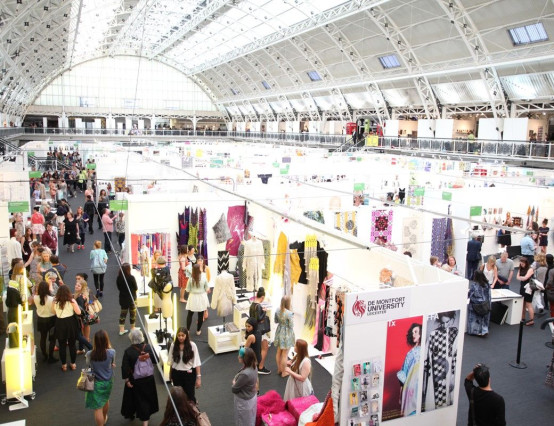



0 Comments